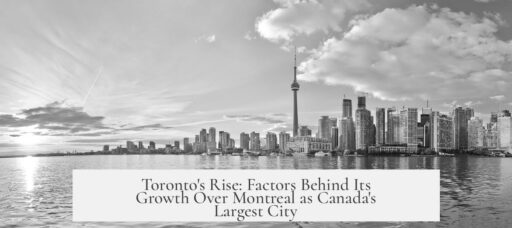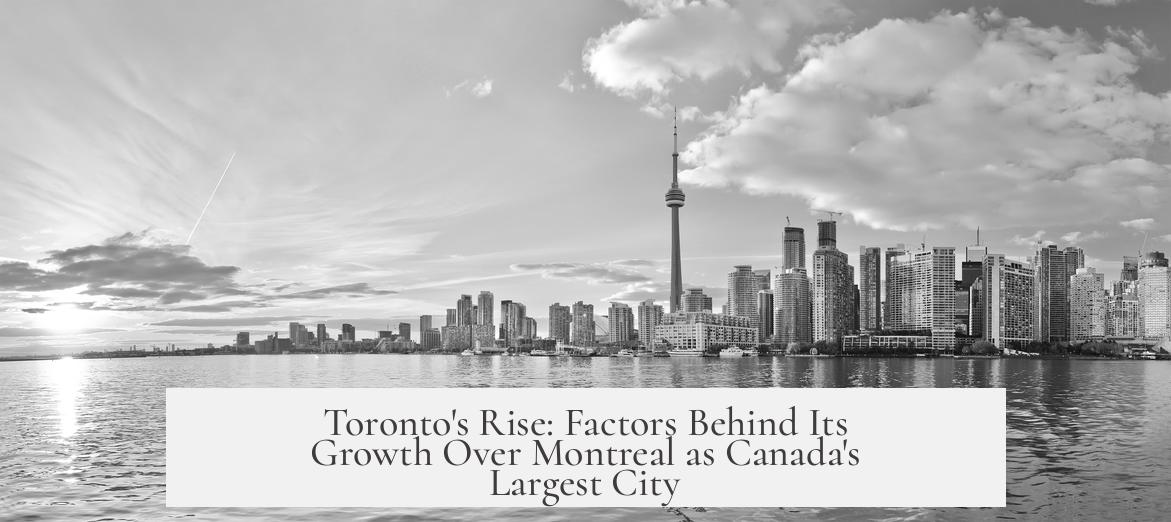Toronto surpassed Montreal as the biggest city in Canada due to a combination of historical population shifts, economic realignments, transportation developments, and political changes. These factors created a complex but traceable path from Montreal’s early dominance to Toronto’s rise as the country’s leading metropolis by population and economic influence.
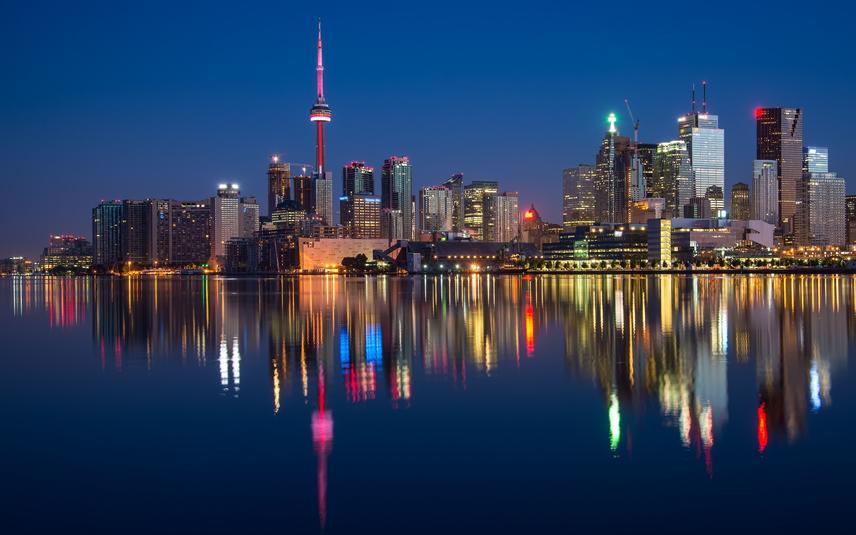
At Confederation, Montreal was the largest city. In the 1871 Census, Montreal held 107,225 residents, while Toronto had 56,092. Over the following decades, Toronto grew steadily. By the late 19th century, Toronto was second, trailing Montreal but expanding rapidly. The 2001 Census marked the turning point when Toronto’s population reached approximately 2.48 million, overtaking Montreal’s 1.04 million. It is important to note that administrative boundaries influenced these numbers. Before the 1998 amalgamation, Toronto proper was smaller than its current size.
- Prior to 1998, Toronto’s city limits excluded areas like North York, Scarborough, and Etobicoke.
- These were independent municipalities but now form part of the expanded City of Toronto.
- If combined earlier, Toronto’s population would have surpassed Montreal’s well before 2001.
- Montreal also underwent amalgamation in the early 2000s but did not experience similar population surges.
The economic focus of both cities shaped their growth differently. Montreal thrived initially as a hub at the end of fur trading routes and a gateway for transatlantic trade. However, Toronto’s location aligned better with expanding continental trade networks, especially those connecting with the American Midwest and the Great Lakes region. This north-to-south economic flow favored Toronto’s development over Montreal’s east-to-west orientation.

- By the mid-19th century, Toronto became a key grain shipping point for southern Ontario.
- Only 2% of grain from Toronto moved up the St. Lawrence River to Montreal; most traveled southwards.
- Location advantage allowed Toronto to integrate with booming American industrial centers like Chicago.
Railroads and industrialization further propelled Toronto’s growth. The completion of the Canadian Pacific Railway in 1885 connected Toronto, Montreal, and British Columbia. Rail links were crucial for city development then and gave Toronto access to multiple directions for trade and travel. Industrial hubs formed around rail yards; both Toronto and Montreal benefited, but Toronto leveraged these connections into broader networks.
Transportation advances in the 20th century also favored Toronto. The St. Lawrence Seaway, finished in 1959, enabled larger vessels to navigate directly to Toronto, bypassing Montreal. This boosted Toronto’s industrial capacity and trade effectiveness through both rail and maritime routes.

Political and economic dynamics in Quebec played a notable role in Toronto’s rise. The Quiet Revolution in the 1960s introduced significant social change in Quebec. Subsequently, political tensions and two referendums on Quebec sovereignty in 1980 and 1995 led many businesses and residents, especially non-Francophones, to relocate. Toronto absorbed much of this migration, including major financial institutions.
- All of the Big Five Canadian banks now operate their headquarters in Toronto.
- The financial sector’s shift solidified Toronto’s status as Canada’s economic powerhouse.
- This migration enhanced Toronto’s cultural diversity and labor force.
Summarizing, Montreal started as Canada’s economic and population center due to its early trade routes and fur trade dominance. As economic dynamics shifted westward toward the American Midwest, Toronto gained prominence by integrating into larger continental trade and industrial networks. Transportation infrastructure, such as railways and seaway improvements, further strengthened Toronto. Political upheaval in Quebec during the latter 20th century accelerated talent and capital movement to Toronto.
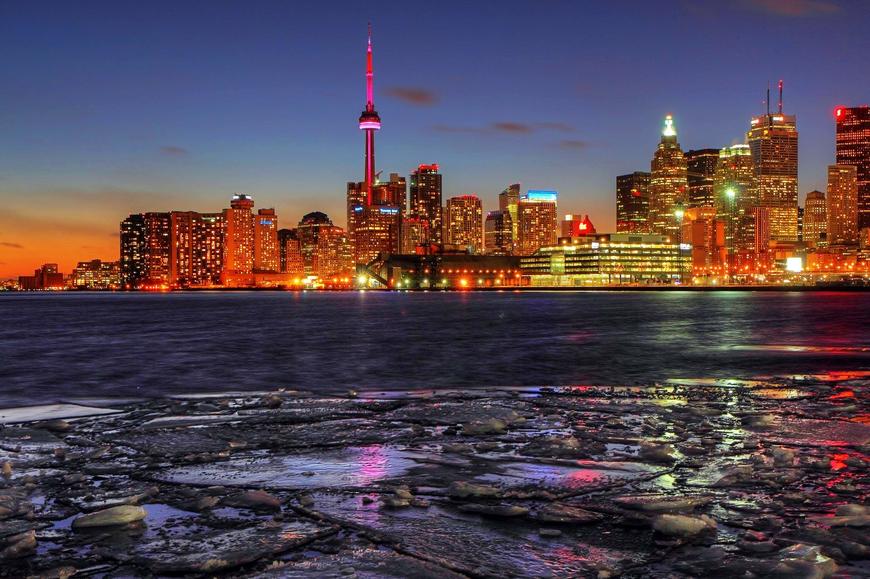
| Factor | Impact on Toronto’s Growth | Contrast with Montreal |
|---|---|---|
| Population & Amalgamation | Incorporation of suburbs increased resident count significantly by 1998. | Montreal amalgamated later with smaller population effect. |
| Economic Alignment | Linked to Great Lakes and American Midwest trade routes. | Montreal remained focused on St. Lawrence and transatlantic trade. |
| Transport Infrastructure | Railroads and Seaway enhanced trade capacity and industrial growth. | Montreal benefitted but eventually bypassed by seaway traffic. |
| Political Changes | Received migration of businesses and skilled workers from Quebec post-1960s. | Montreal experienced economic uncertainty and migration outflows. |
These combined factors explain why Toronto outpaced Montreal to become Canada’s largest city by population and economic strength.
- Municipal amalgamation expanded Toronto’s official population base.
- Economic networks favored Toronto due to its geographic trade position.
- Modern transportation infrastructure gave Toronto a competitive edge.
- Political shifts in Quebec prompted financial and human capital migration.
Why Did Toronto Surpass Montreal as the Biggest City in Canada?

Toronto surpassed Montreal as Canada’s biggest city due to a mix of historical growth, shifting trade routes, political changes, and strategic transportation links. The two cities have played pivotal roles at different times, but Toronto’s unique advantages gave it the edge over the years.
Let’s dive deep into this story. Imagine two ambitious siblings—Montreal, the elder, once the undisputed star, and Toronto, the relentless younger sibling, growing quietly but determinedly until it overtook the family business.

Starting Point: Population and Boundaries
Back in 1871, Montreal was the undisputed champ, with a population of 107,225. Toronto, meanwhile, had just over half that—56,092 people. However, Toronto was on the rise, climbing to second place by 1881. It stayed there for nearly a century.
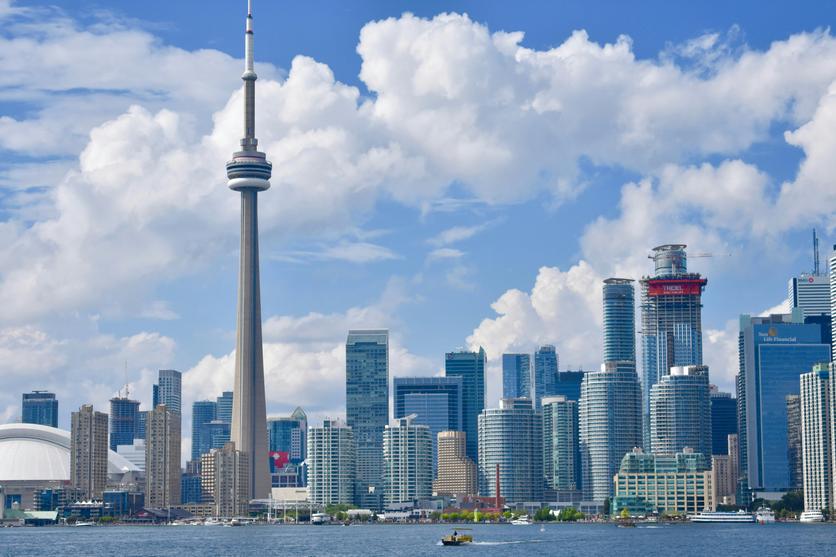
So when exactly did Toronto become numero uno? The official census marks 2001, when Toronto’s population hit 2.48 million compared to Montreal’s 1.04 million.
But numbers alone don’t tell the whole story. Administrative boundaries mattered a lot. Until 1998, Toronto was just downtown. Its bustling suburbs like North York, Scarborough, and Etobicoke weren’t officially part of Toronto—they were separate cities.
Had Toronto’s suburbs been counted earlier, the city would have officially surpassed Montreal years or even decades earlier. Montreal, by the way, also had its own amalgamation of municipalities in the early 2000s but still couldn’t catch up.
The Economic Currents Move South
Here’s where geography and economics mix to tell a juicy tale. The national story often talks about settlement moving east to west, but the continent’s economic rhythms pulse north to south.
Montreal was the central hub of the early fur trade, dominating the Northeast’s economy. But Toronto’s fate was tied to the Great Lakes and American Midwest—one of the world’s busiest economic corridors.
By the mid-19th century, grain from southern Ontario moved mostly south—to Chicago and beyond—rather than north to Montreal. In 1859, only 2% of Toronto’s grain exports went to Montreal. The rest found their way through lake and rail to the booming markets south across the border.
This trade network made Toronto a linchpin in a growing continental economy while Montreal stayed tied to the old transatlantic routes.
Railways and Industrial Might
The railway was the backbone of progress in the late 1800s. When Canada completed the transcontinental Canadian Pacific Railway in 1885, it finally connected east to west.
Toronto and Montreal both benefited, becoming industrial powerhouses. But Toronto’s railway links were a bit more nimble, connecting it in all directions, enhancing trade opportunities.
Quebec City couldn’t say the same and ended up lagging far behind.
The Game-Changer: St. Lawrence Seaway
When the St. Lawrence Seaway opened in 1959, it allowed massive container ships to bypass Montreal altogether and head straight to Toronto’s ports.
This gave Toronto a massive boost. Access to both rail and water meant the city could tap into continental and transatlantic trade at once. It turned Toronto into a dense industrial heart, primed for rapid growth.
Political Shifts and Economic Migration
Now here’s a twist: political events in Quebec profoundly influenced the population balance.
The “Quiet Revolution” of the 1960s brought cultural and political shifts. Then came the tough times—two separation referendums in 1980 and 1995 left a mark.
Many financial institutions and thousands of francophone and non-francophone residents left Quebec, settling in Toronto. This migration was a huge boost to Toronto’s financial and corporate sectors.
In fact, all of Canada’s big five banks—including the historically Montreal-based Bank of Montreal—moved their operational headquarters to Toronto.
This Is How the Pieces Fit Together
Montreal started strong as Canada’s first economic hub, anchored in transatlantic trade and fur networks. But as trade and economic activity shifted west and south to the Great Lakes and the US Midwest, Toronto plugged right into that rising power corridor.
Industrialization, railways, and logistical advantages further helped Toronto grow. The opening of the St. Lawrence Seaway doubled down on this trend, making Toronto a prime hub for global trade.
Then throw in Quebec’s political shifts, which caused out-migration, economically strengthening Toronto’s position.
Toronto’s rise is a classic case of geography, infrastructure, economy, and politics all dancing together to create a new champion.
Lessons and Reflections for Other Cities
- Don’t underestimate the power of transport networks like rail and shipping in shaping a city’s future.
- Political stability matters for economic growth and population retention.
- Trade patterns and geographic position can make or break a metropolis.
Think about it: If you’re trying to grow a city or a business, aligning with emerging economic corridors is crucial.
In Closing
Why did Toronto surpass Montreal as Canada’s largest city? Because it rode the wave of changing economic currents, leveraged infrastructure smartly, swallowed its suburbs into one big metropolitan package, and welcomed migration—especially during times of upheaval in Quebec.
Montreal still has charm and culture in spades, but Toronto’s story is one of bold growth and strategic positioning. It’s not just about who’s biggest now—it’s about who adapted best to changing times.
So, when you wander the streets of Toronto, remember—you’re walking in a city that surged ahead thanks to smart connections (rail and water), economic shifts southward, and a pinch of political luck.
Ready to bet on your own “Toronto strategy”? How will your city adapt when the economic tides shift next?
1. Why did Toronto surpass Montreal in population only after 2001?
Toronto’s official city boundaries expanded in 1998 to include suburbs like North York and Scarborough. This amalgamation increased Toronto’s population significantly. Before that, Montreal remained larger within its own city limits despite Toronto’s fast growth.
2. How did economic trade routes affect Toronto’s growth compared to Montreal?
Toronto’s economy connected southward to the Great Lakes and the American Midwest trade networks. Meanwhile, Montreal traded mainly via the St. Lawrence River toward the Atlantic. The continental trade shift favored Toronto’s location for economic expansion.
3. What role did transportation infrastructure play in Toronto’s rise?
The railroad linked Toronto in all directions, supporting industry and trade. The 1959 St. Lawrence Seaway allowed container ships to reach Toronto directly, bypassing Montreal. These connections boosted Toronto’s industrial and commercial growth.
4. How did political events in Quebec influence Toronto’s population growth?
The Quiet Revolution and independence referendums caused many non-Francophones and financial institutions to leave Quebec. Toronto absorbed much of this migration, growing as Canada’s financial hub as banks moved their headquarters there.
5. Why did Montreal’s economic importance decline relative to Toronto?
Montreal thrived early on as a fur trade and transatlantic hub. Over time, trade shifted west and south toward Chicago and the Great Lakes region. Toronto’s position in this growing economic area helped it surpass Montreal as Canada’s largest city.
